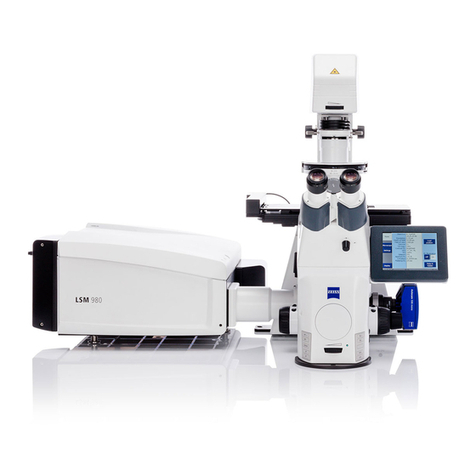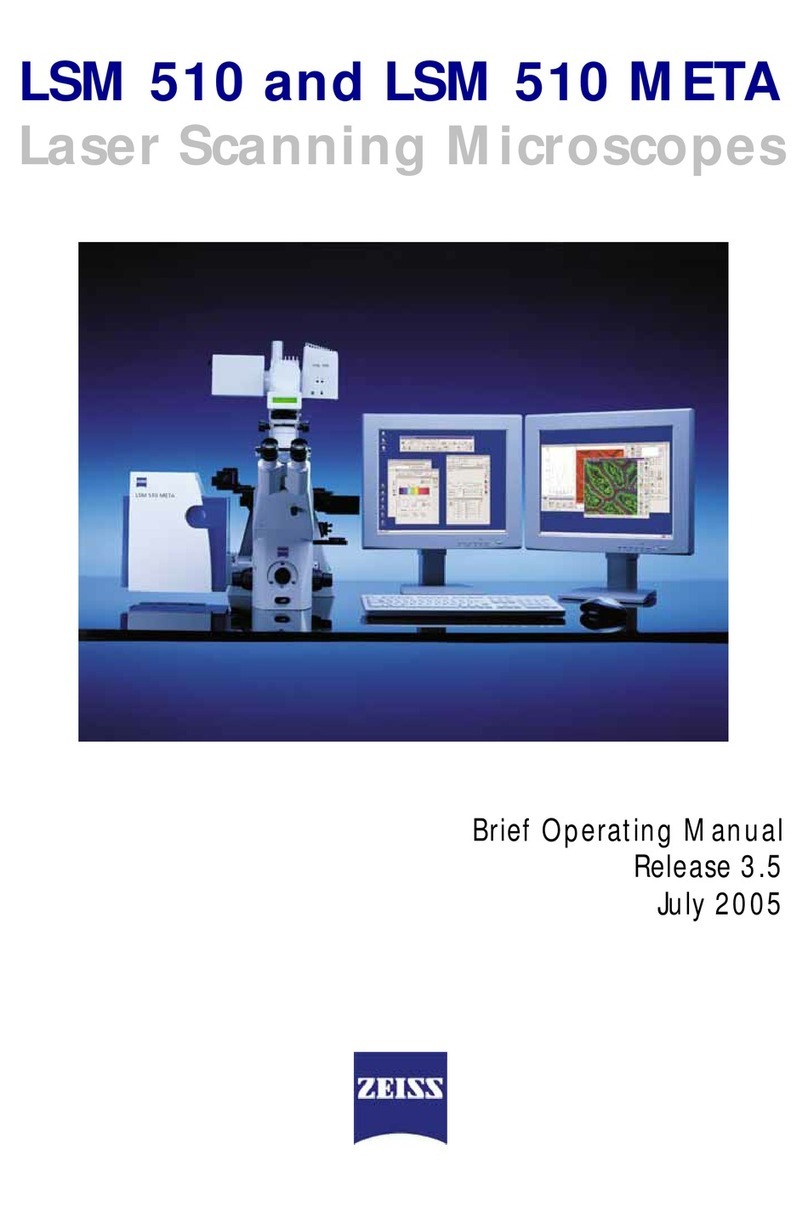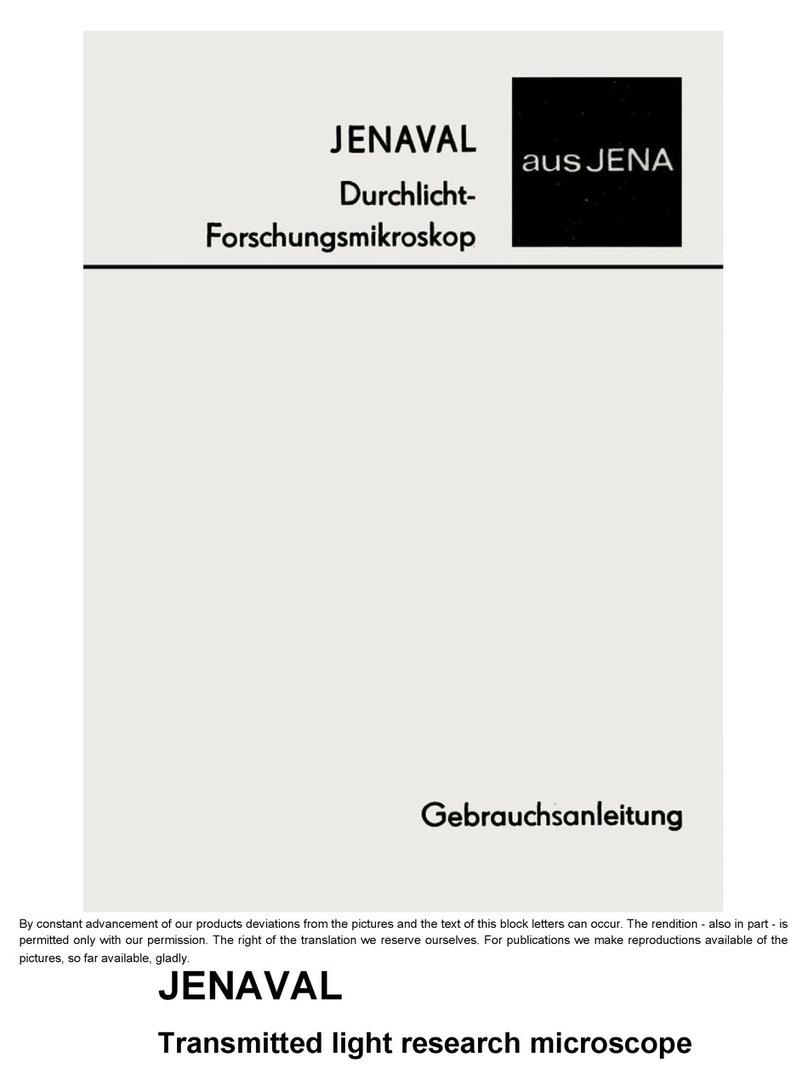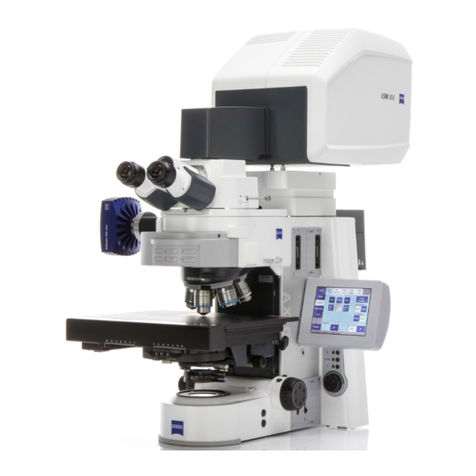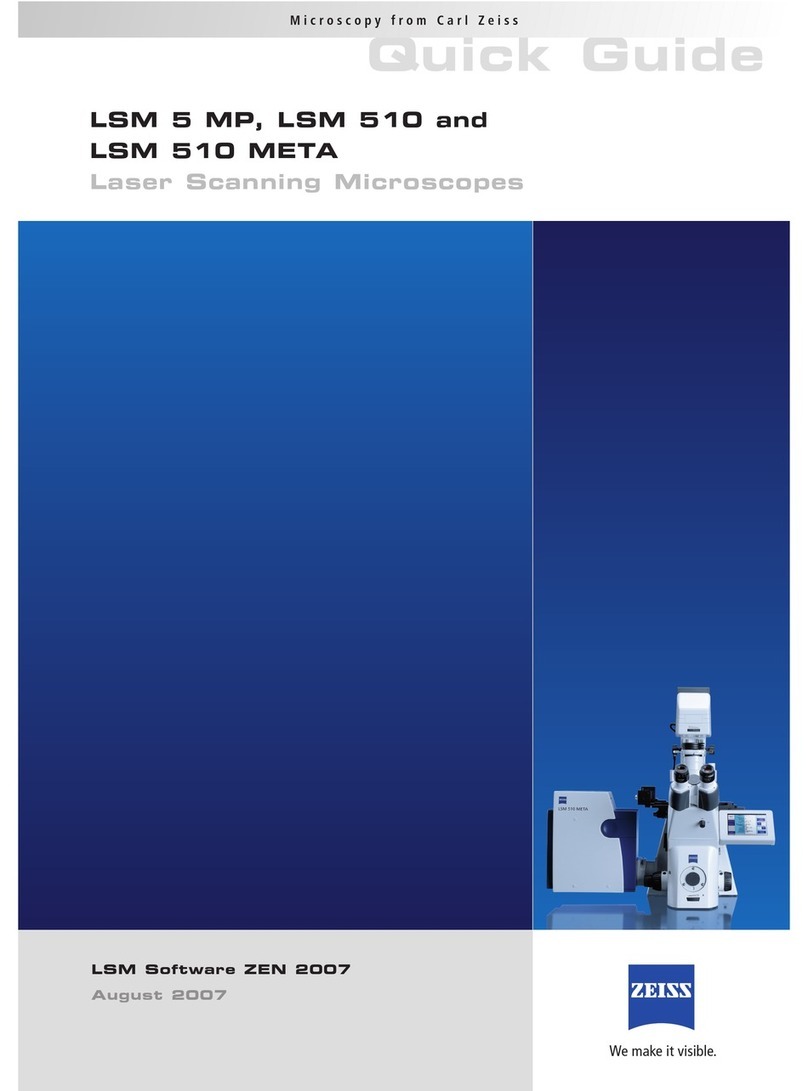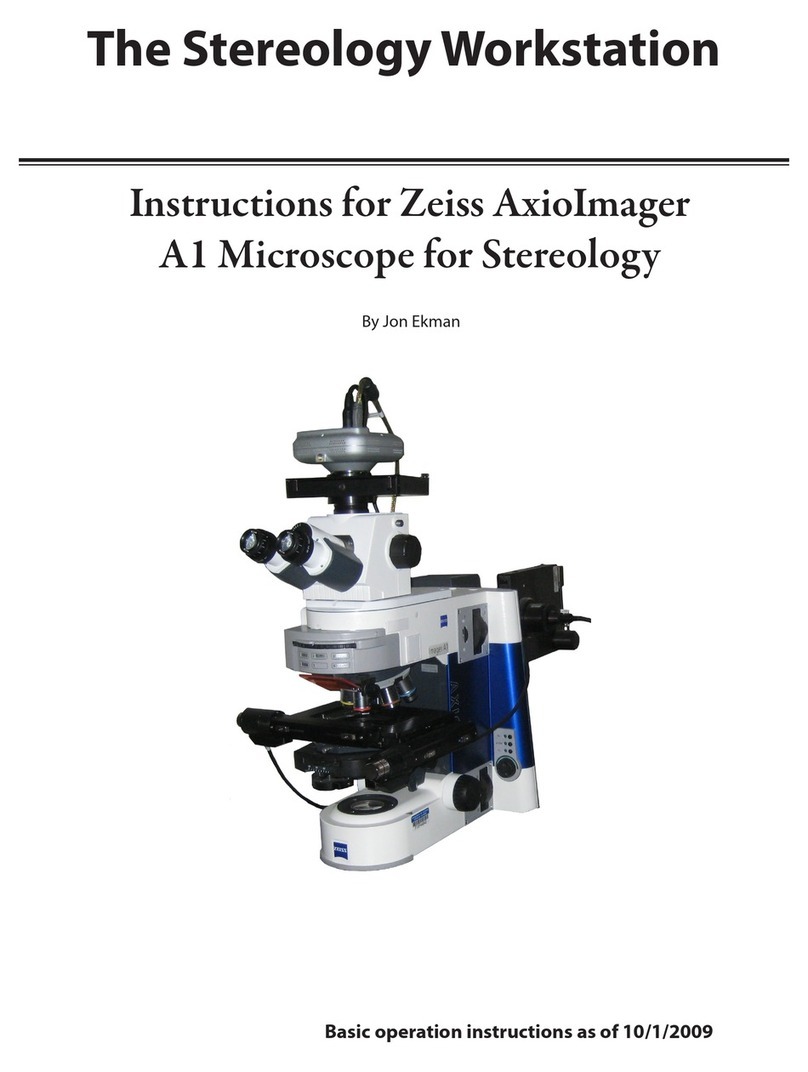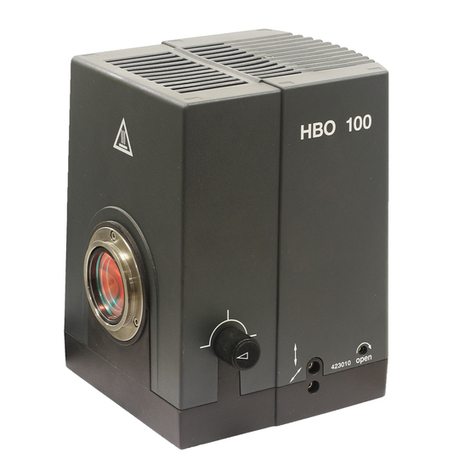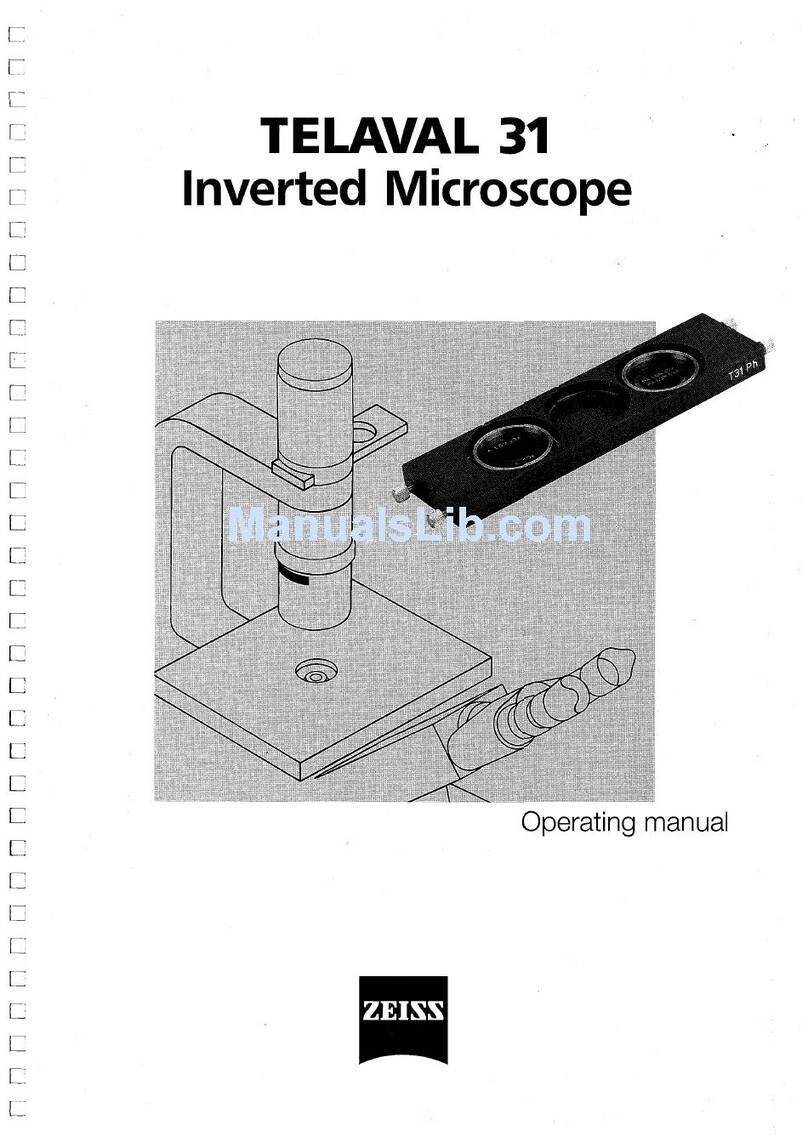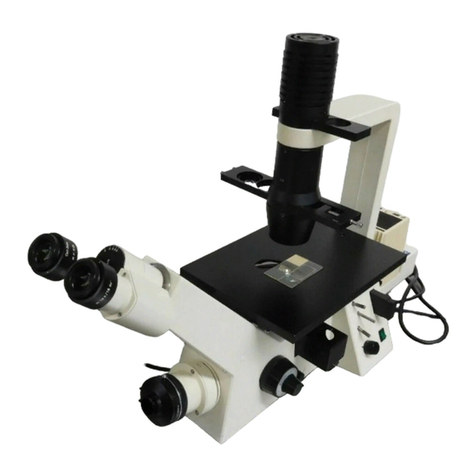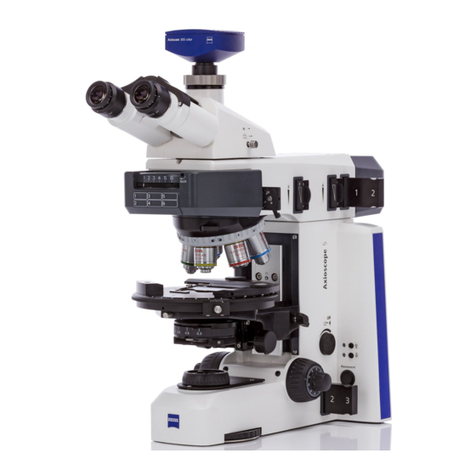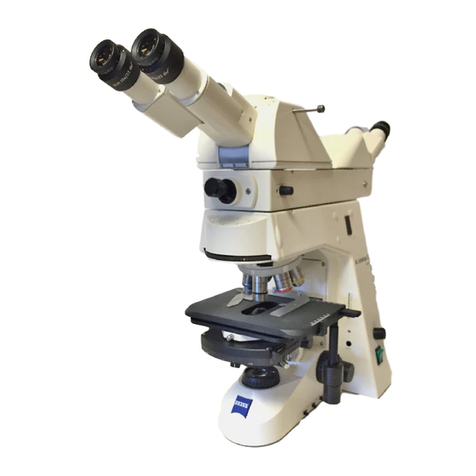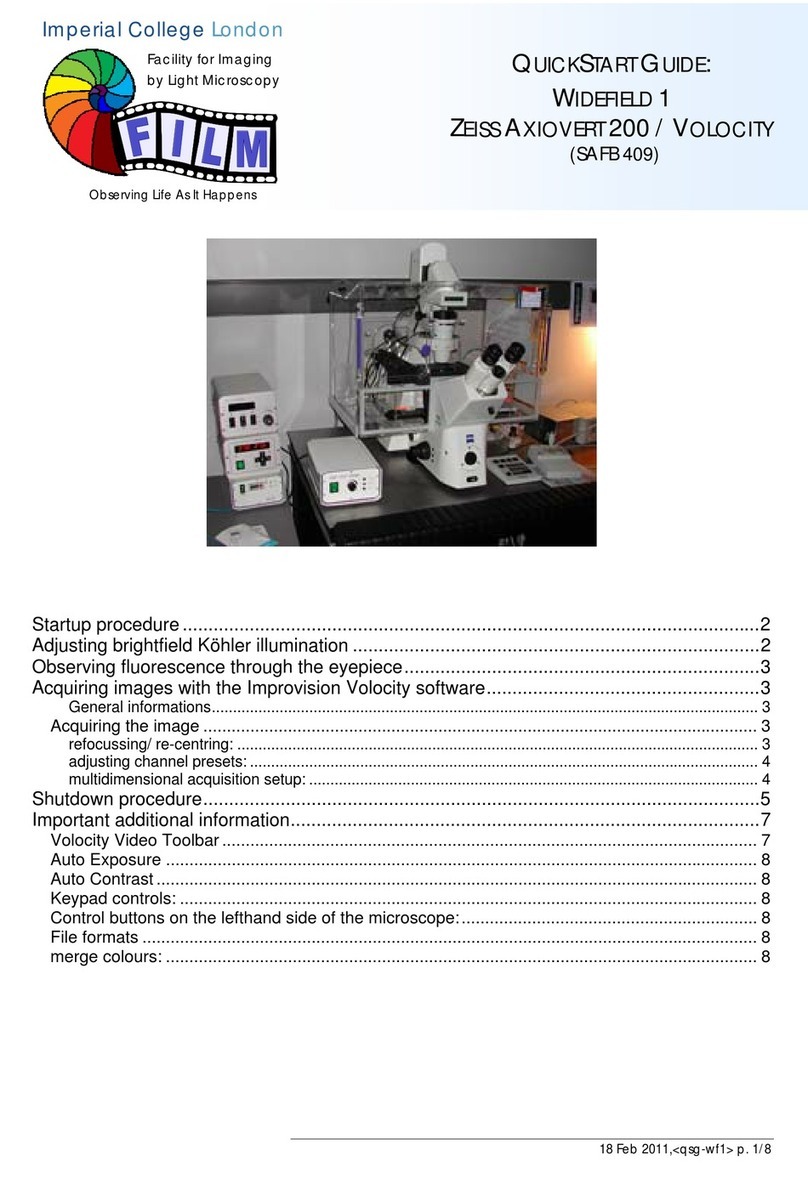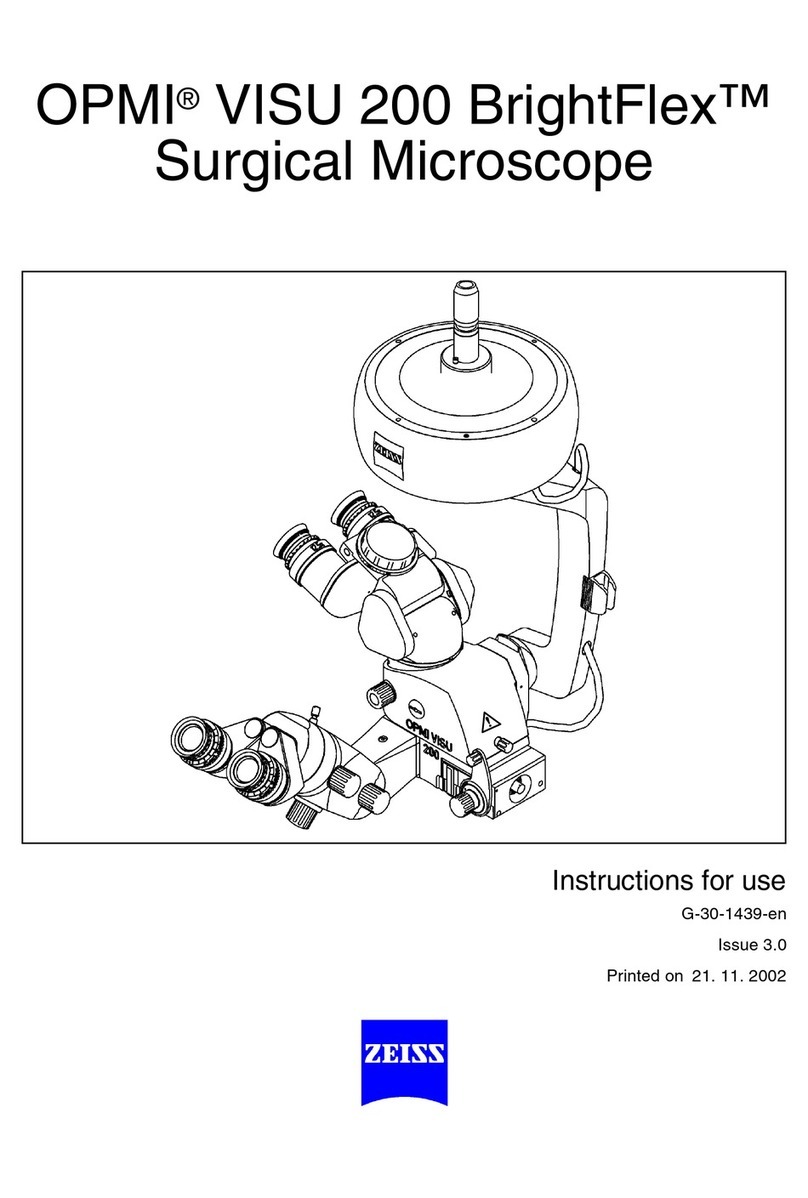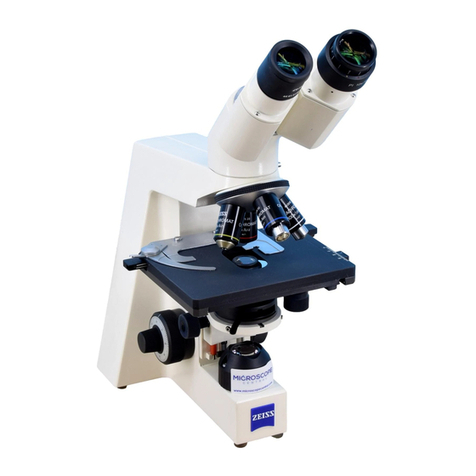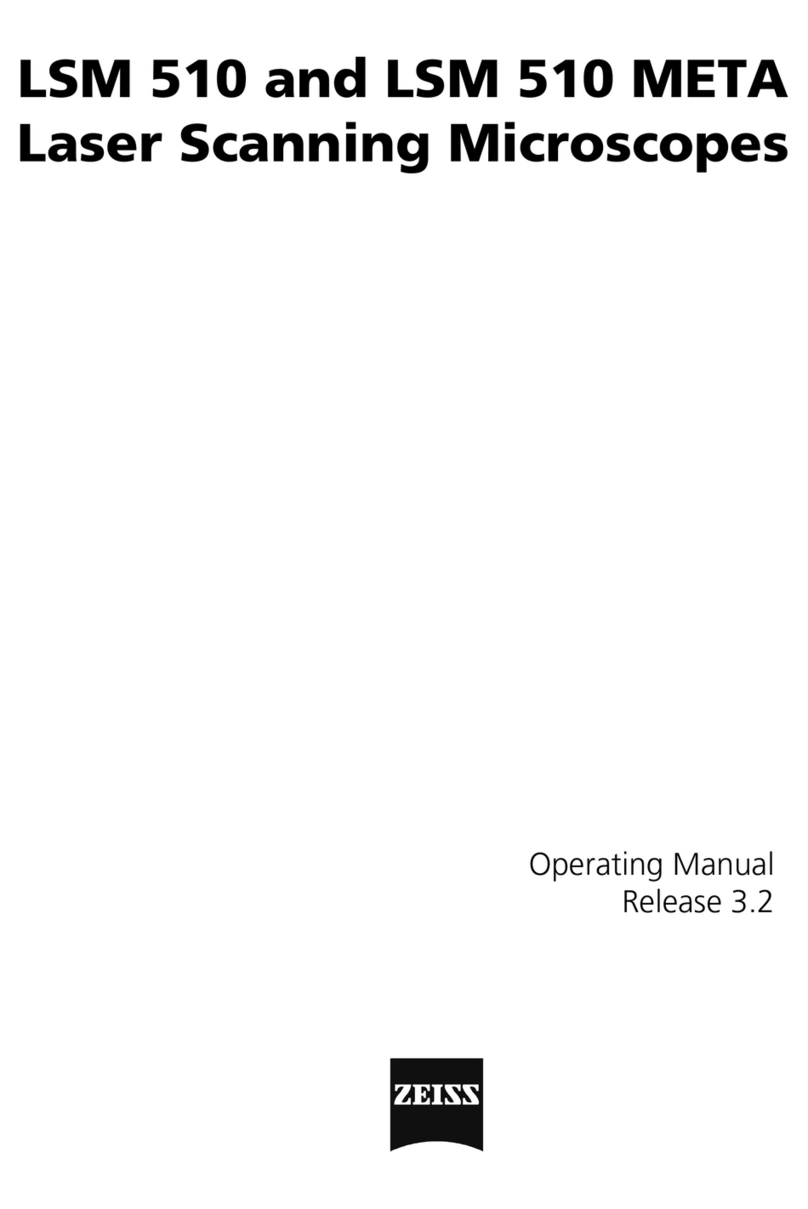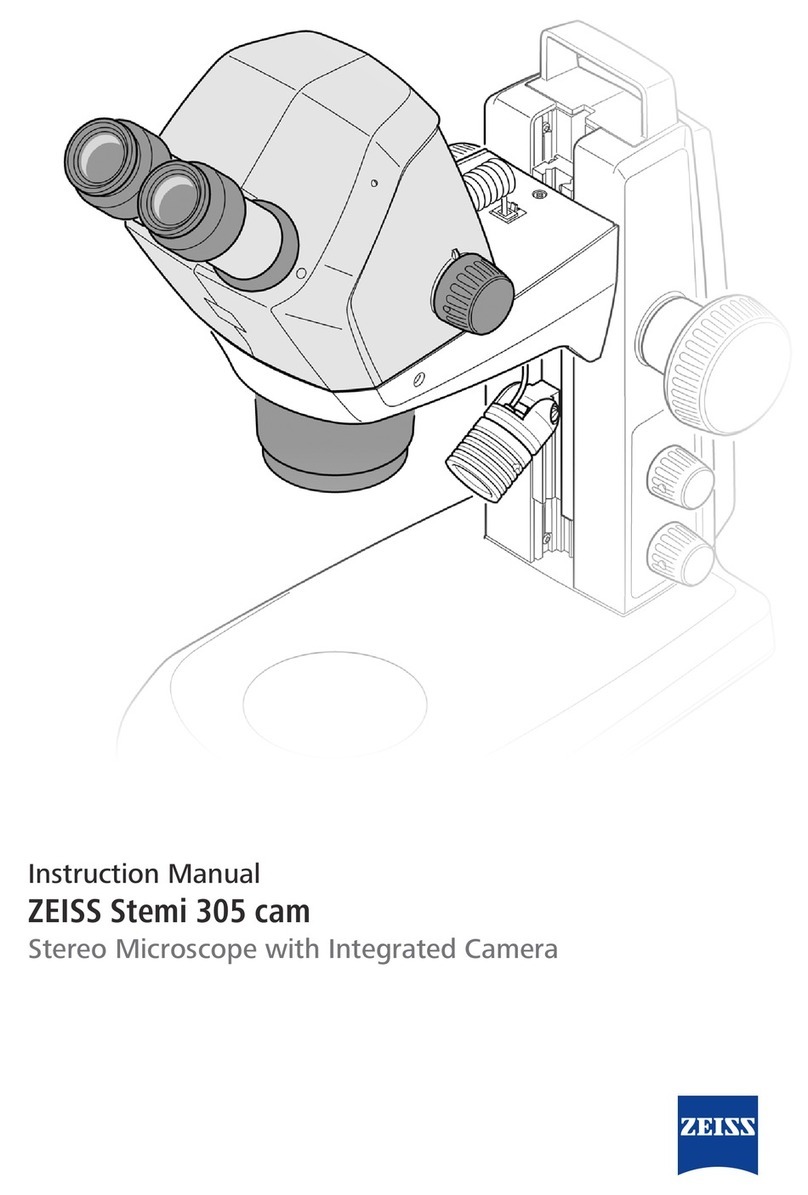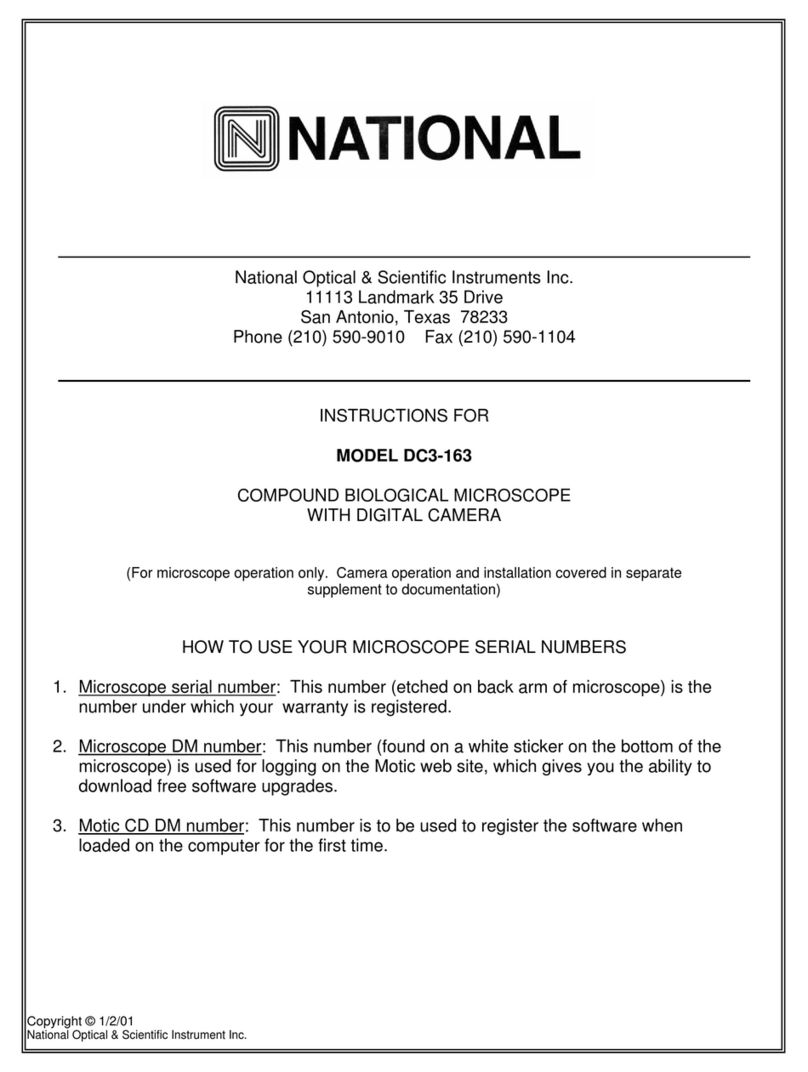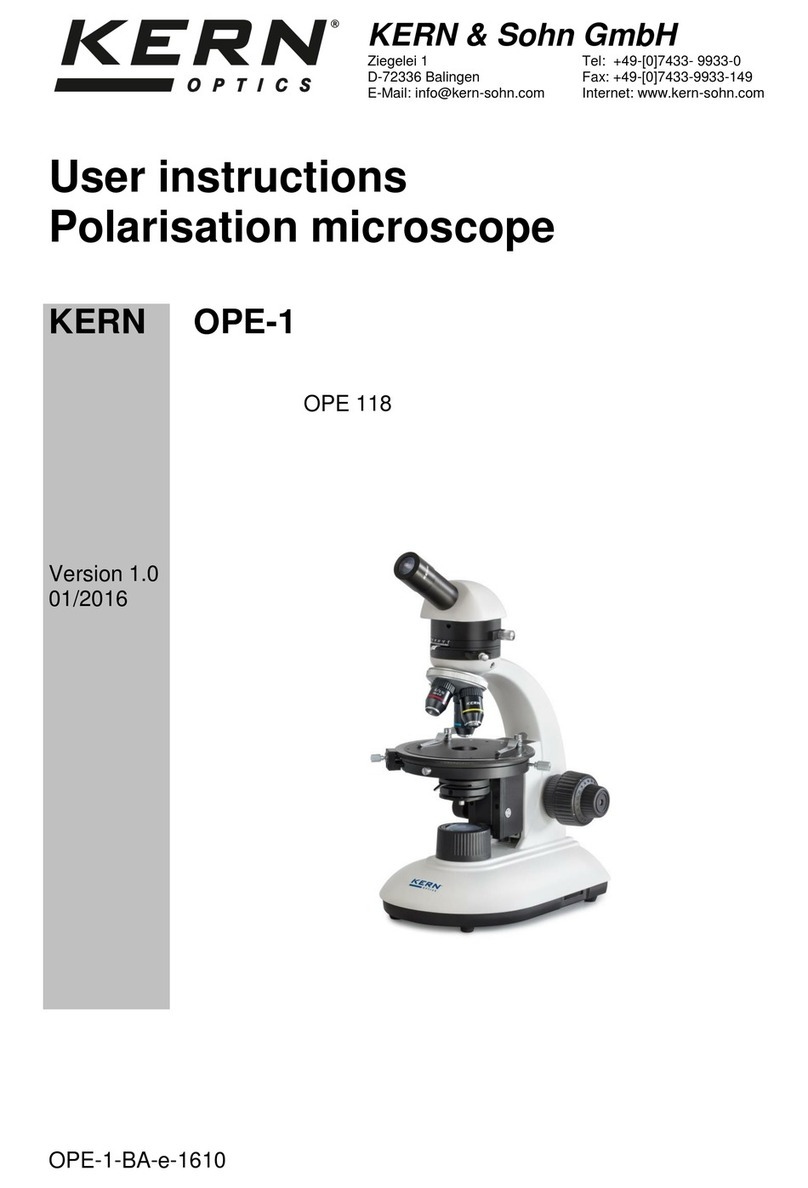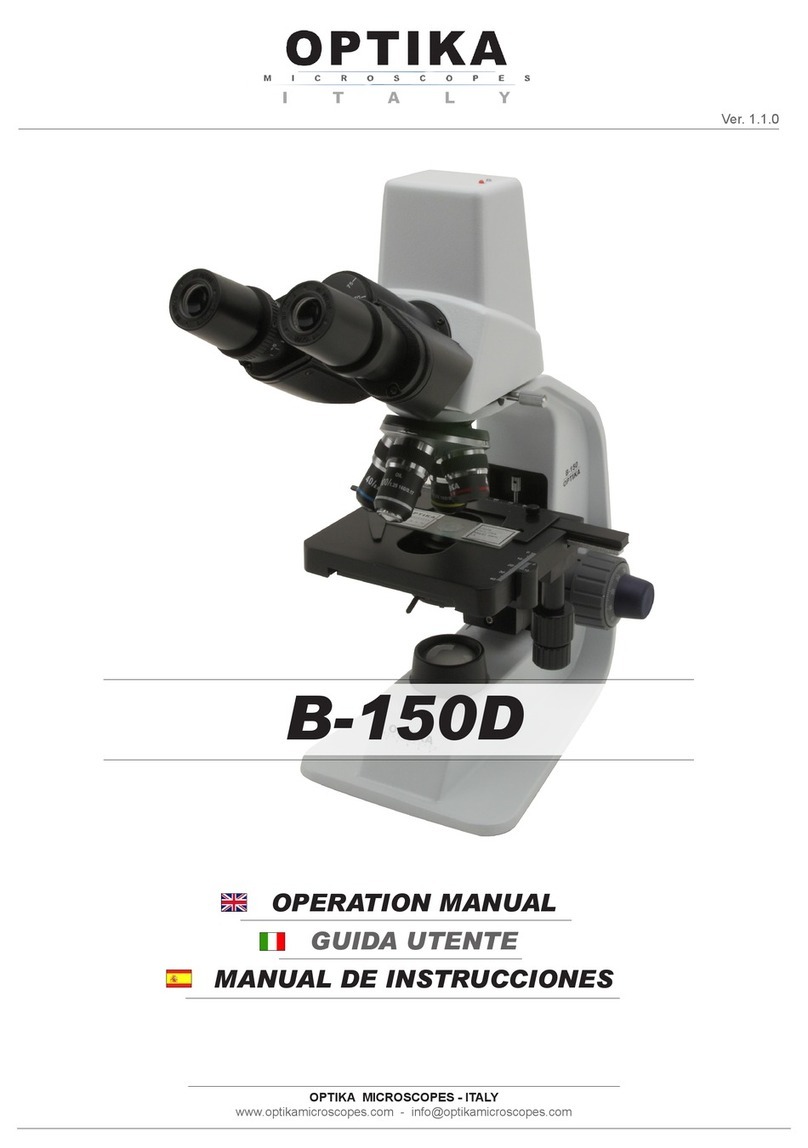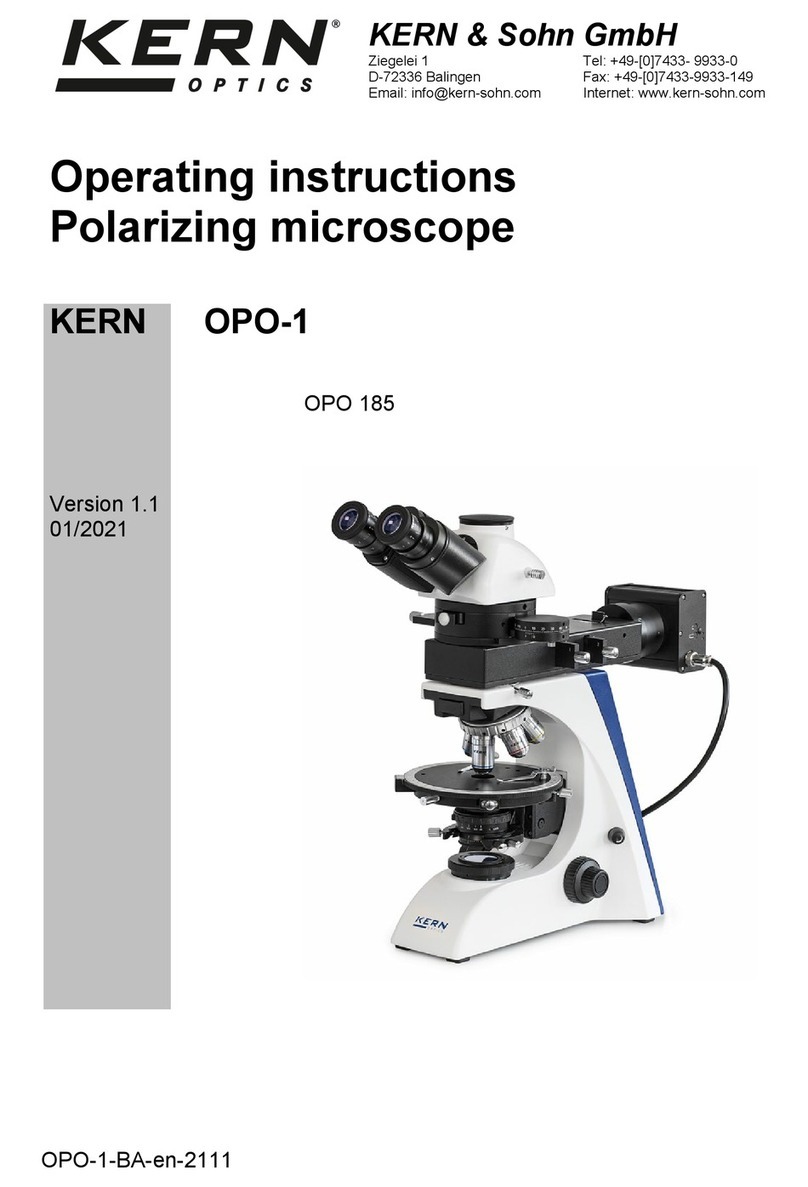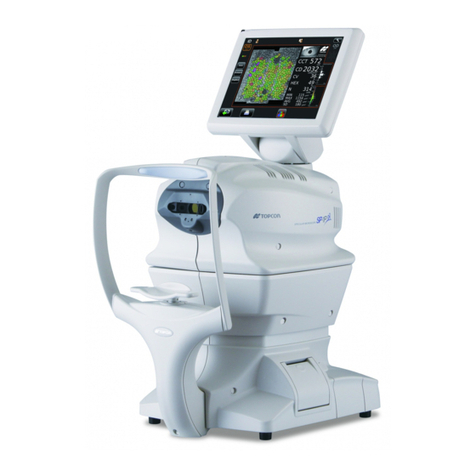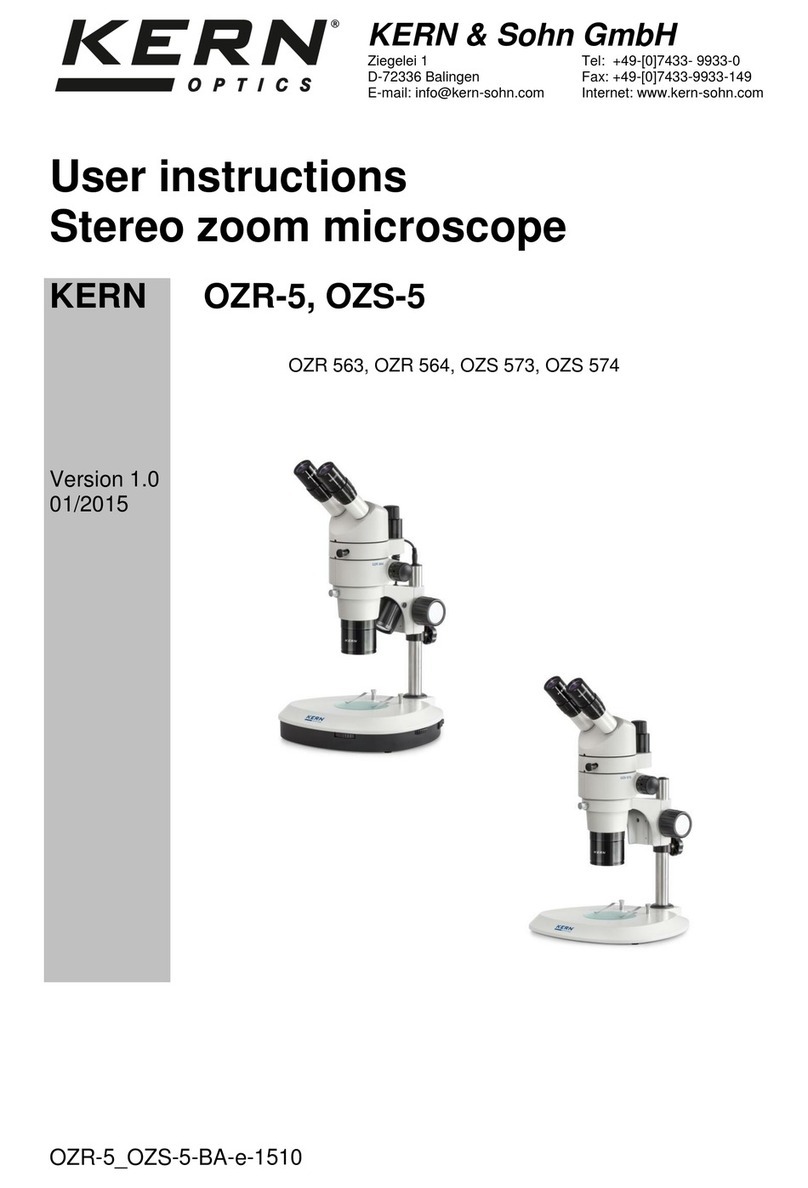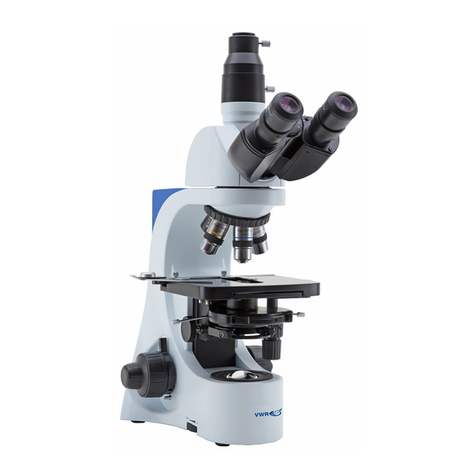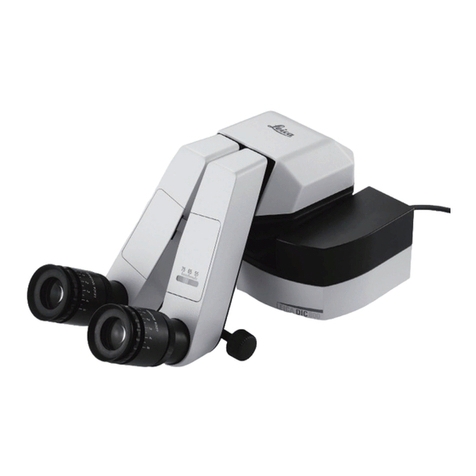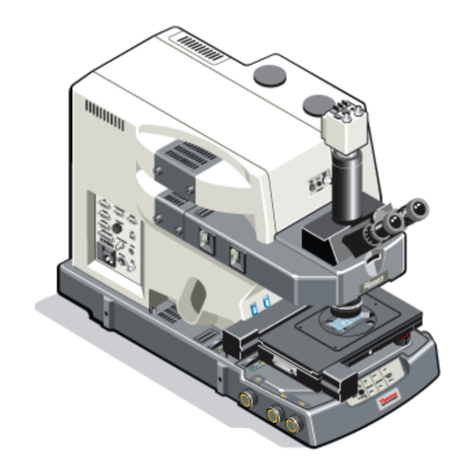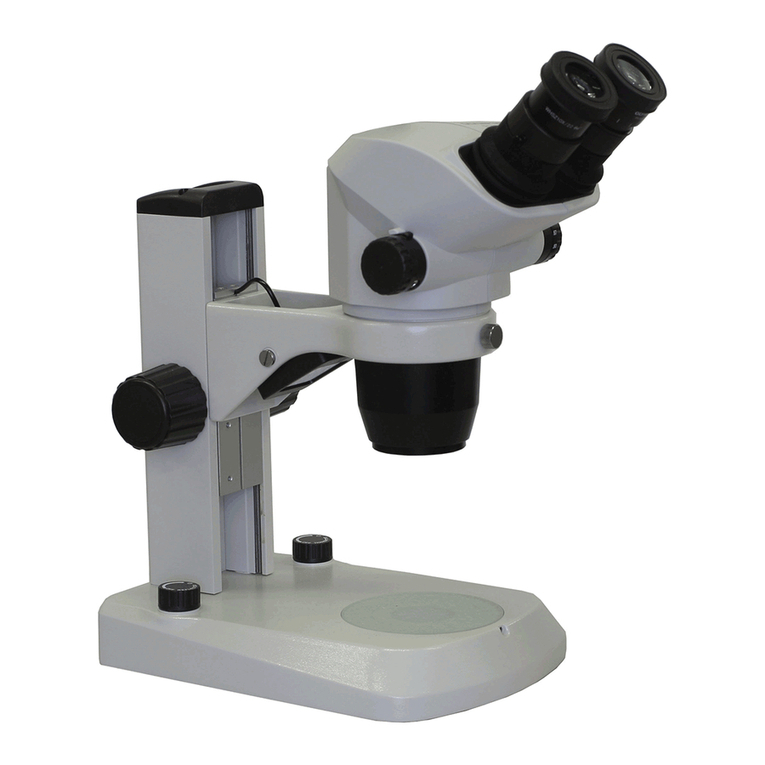
CONTENTS
Axio Zoom.V16 Carl Zeiss
05/2012 435080-9030-701 5
CONTENTS
Page
1INTRODUCTION ........................................................................................................... 7
1.1 General information....................................................................................................... 7
1.2 Notes on instrument safety ............................................................................................ 8
1.3 Notes on warranty ....................................................................................................... 11
2DESCRIPTION ............................................................................................................. 11
2.1 Proper use of zoom microscopes .................................................................................. 11
2.2 Microscope systems ..................................................................................................... 12
2.3 Mechanical interfaces................................................................................................... 12
2.4 Technical data.............................................................................................................. 13
3SET-UP ....................................................................................................................... 17
3.1 General information..................................................................................................... 17
3.2 Installing stand components......................................................................................... 18
3.3 Mounting the microscope ............................................................................................ 20
3.4 Inserting eyepieces....................................................................................................... 22
3.5 Installing and connecting the human interface panel (HIP)............................................. 23
3.6 Mounting and connecting Manual Rotary Control (MaRC) ............................................ 24
3.7 Mounting the stages.................................................................................................... 26
3.7.1 Adapter ring for stand base 450................................................................................... 26
3.7.2 Adapter for stages with 84 mm and 120 mm mounting faces ....................................... 26
3.7.3 Stages with an 84 mm mounting face .......................................................................... 27
3.7.4 Stages with an 120 mm mounting face ........................................................................ 27
3.8 Mounting the reflected light illumination ...................................................................... 28
3.8.1 Mounting on the objective (∅66 mm).......................................................................... 28
3.8.2 Attachment with carrier and holder (M8 tapped hole)................................................... 30
3.9 Mounting transmitted light unit S................................................................................. 31
3.10 Inserting the VisiLED transmitted light unit H ................................................................ 33
3.11 Installing the camera adapter ....................................................................................... 35
3.12 Making electrical connections....................................................................................... 36
4OPERATION ............................................................................................................... 37
4.1 Human interface panel control unit (HIP)....................................................................... 37
4.1.1 Functional elements on the HIP .................................................................................... 37
4.1.2 Menu guidance in Setting mode................................................................................... 38
4.2 Manual rotary control (MaRC) unit ............................................................................... 40
4.2.1 ON state...................................................................................................................... 40
4.2.2 Control of the focus motor by coarse and fine drive...................................................... 41
4.2.3 Travel to zoom clickstop positions................................................................................. 41
4.2.4 Fast zooming using a key combination in a positive or negative direction....................... 41
4.2.5 Fast focusing using a key combination in a positive or negative direction ....................... 41
4.2.6 Saving a focus position................................................................................................. 42
4.2.7 Traveling to the saved focus position ............................................................................ 42
4.2.8 Reversing rotation of MaRC.......................................................................................... 42
4.3 Switching on ............................................................................................................... 42
4.4 Switching off ............................................................................................................... 42


